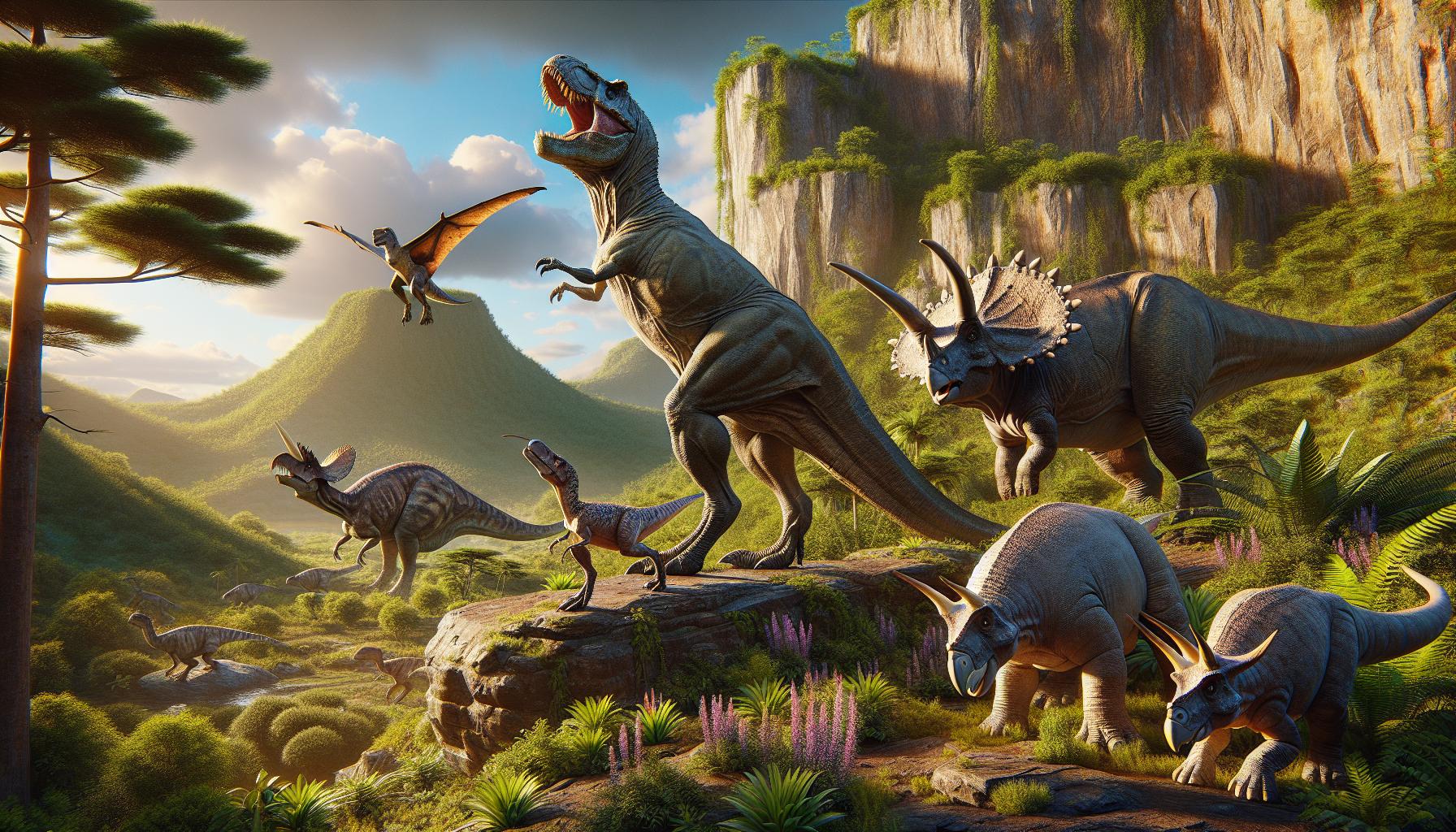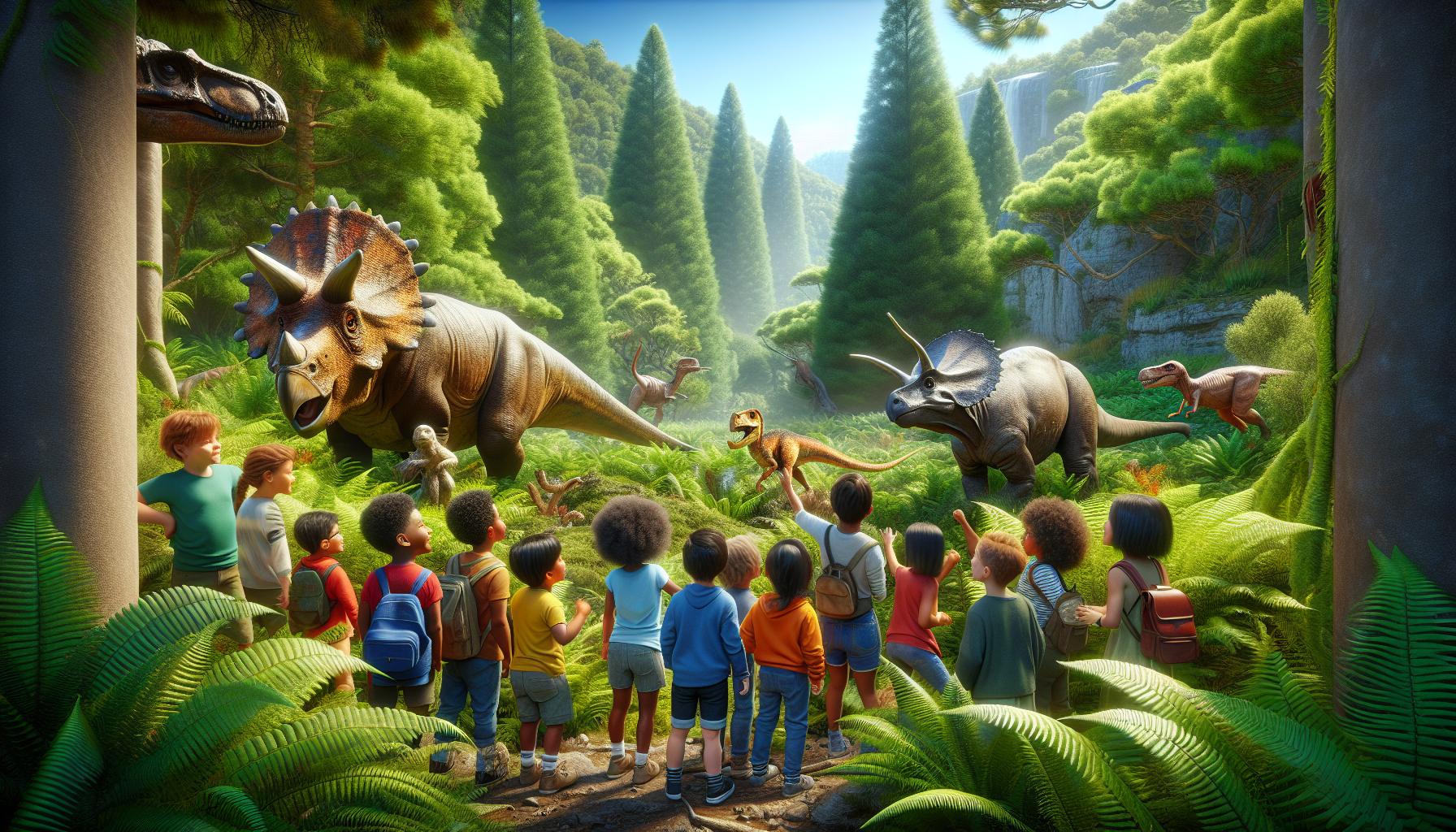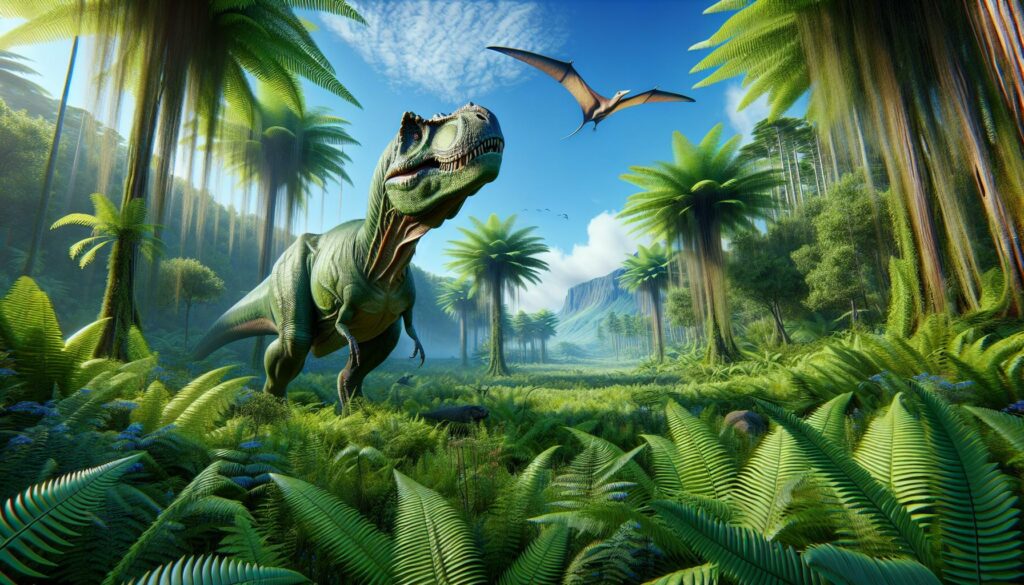Dinosaur animations have always fascinated me, blending creativity with the incredible world of prehistoric creatures. From the majestic T-Rex to the swift Velociraptor, these animated depictions bring dinosaurs to life in ways that spark our imagination and curiosity.
In this article, I’ll explore the captivating realm of animated dinosaurs, delving into their impact on popular culture and education. Whether you’re a fan of classic films or the latest series, the way these ancient giants are portrayed can shape our understanding and appreciation of their existence. Join me as I uncover the magic behind these animated wonders and their significance in today’s storytelling landscape.
- Impact on Education: Animated dinosaurs serve as engaging educational tools, helping explain complex concepts such as evolution and extinction in a captivating manner.
- Cultural Relevance: Dinosaurs in animation help bridge the gap between imagination and historical reality, becoming enduring icons in popular culture through franchises like “Jurassic Park.”
- Character Evolution: Main and supporting characters evolve to embody essential traits, emphasizing lessons on teamwork, resilience, and the importance of community.
- Visual and Sound Design: High-quality visual aesthetics and immersive sound design enhance the storytelling experience, creating a compelling environment for audiences to enjoy.
- Themes of Adventure: Narratives often explore themes of family, friendship, and discovery, encouraging curiosity and a sense of adventure in viewers of all ages.
- Audience Reception: While animated dinosaur productions excel at entertainment, they also face critique for balancing scientific accuracy with engaging storytelling, fueling ongoing interest in paleontology.
Animados:usiwne80me4= Dinosaurios
Animados:usiwne80me4= dinosaurios encapsulates a vibrant fusion of art and storytelling that captures the imaginations of audiences. These animations represent a diverse array of dinosaur species, showcasing their unique characteristics, behaviors, and environments.
Animation studios frequently invest in detailed research to ensure accuracy while blending facts with creativity. Accurate depictions of dinosaurs often stimulate interest in paleontology, encouraging deeper exploration of these ancient creatures. For instance, the portrayal of a Tyrannosaurus rex emphasizes its formidable size, sharp teeth, and predatory nature, illustrating the dinosaur’s role in its ecosystem.
Animados:usiwne80me4= dinosaurios also contribute significantly to education, serving as engaging tools for learning. Many educational programs incorporate animated representations to explain complex concepts such as evolution, extinction, and fossilization. This interactive approach captivates children, making learning about Earth’s history enjoyable and memorable.
Furthermore, animated dinosaurs often transcend their original purpose, becoming icons in popular culture. Franchises like “Jurassic Park” have spawned various media, from films to merchandise, underscoring dinosaurs’ lasting appeal. Their portrayal in animations fosters a connection between the audience and these magnificent creatures, bridging the gap between imagination and historical reality.
The combination of entertainment and education in animados format encourages curiosity about prehistoric life, fueling ongoing interest and research in the field of paleontology.
Key Characters and Their Evolution

Animated dinosaur productions feature a range of characters that evolve throughout their stories. These characters embody traits that not only entertain but also educate audiences about prehistoric life.
Main Protagonists
Main protagonists often include iconic dinosaurs like the Tyrannosaurus rex, Triceratops, and Velociraptor. The T. rex usually represents strength and courage, often showcased as a leader. Its portrayal has evolved to highlight intelligence and problem-solving abilities, rather than merely being a monstrous predator. The Triceratops typically symbolizes teamwork and protection, as it defends vulnerable characters, teaching the importance of community. The Velociraptor’s evolution often emphasizes agility and cleverness, showcasing it as resourceful and strategic. Each character becomes a vessel for lessons on survival and adaptation.
Supporting Characters
Supporting characters complement the main protagonists by adding depth and diversity to the stories. These include herbivorous dinosaurs like Stegosaurus, which often serves as a gentle giant providing wisdom to younger characters. The Pterodactyl might represent freedom and exploration, inspiring curiosity about the world beyond one’s immediate surroundings. Characters like Ankylosaurus introduce unique defensive traits, demonstrating the value of self-protection. These supporting roles enrich the narrative, allowing audiences to understand diverse dinosaur ecosystems and interactions.
Animation Style and Techniques

Animation styles and techniques play a crucial role in depicting dinosaurs, shaping their visual and auditory appeal. I explore the key elements that contribute to the effectiveness of these animated portrayals.
Visual Aesthetics
Visual aesthetics in dinosaur animations prioritize realism while allowing for creative expression. Studios adopt varying art styles, from hyper-realistic 3D models to colorful, stylized representations. Detailed attention to textures, colors, and movement captures the essence of each species. For example, the intricate scales of a Velociraptor are designed to emphasize its predatory agility, whereas the robust frame of a Triceratops highlights its defensive capabilities. Lighting techniques enhance the atmosphere, creating dramatic scenes that draw viewers into prehistoric environments. Natural settings, such as lush forests or arid plains, provide an immersive backdrop that complements the visual storytelling, intriguing audiences and fostering appreciation for these ancient creatures.
Sound Design
Sound design enriches animated dinosaur experiences, adding depth and realism. Authentic sound effects, such as roars and footsteps, create an immersive auditory landscape. Studios often consult paleontologists to develop sounds that mimic possible vocalizations, enhancing the educational aspect. Musical scores accompany key moments, evoking emotions and building tension during exciting scenes. For instance, a suspenseful score may heighten the anticipation of a chase, while softer themes may reflect the nurturing interactions within a herd. The combination of sound effects and music helps to reinforce character development and plot progression, making the animations more engaging and impactful for viewers, especially children learning about prehistoric life.
Themes and Messages

Exploring the themes and messages in animated dinosaur productions reveals important lessons embedded within the narratives. These themes resonate deeply, offering insights into human relationships, the journey of exploration, and the thrill of discovery.
Family and Friendship
Family and friendship play significant roles in animated dinosaur stories. Protagonists often embark on journeys that emphasize the power of collaboration and support from loved ones. Characters like the nurturing Triceratops often teach valuable lessons on teamwork and cooperation, highlighting how working together can overcome challenges. Interactions among characters, such as the bond between a Velociraptor and its pack, illustrate loyalty and the importance of communication. By showcasing these relationships, the animations stress that unity and friendship enable characters to tackle adversities, fostering a sense of community for viewers.
Adventure and Discovery
Adventure and discovery drive the narrative momentum in animated dinosaur tales. Characters frequently engage in quests to unveil the mysteries of their world, inspiring curiosity and wonder. Their journeys often involve exploring uncharted territories or uncovering hidden treasures. These adventures serve as metaphors for personal growth and resilience, teaching viewers to embrace challenges and learn from their experiences. The excitement of discovering new species or ancient landscapes stimulates interest in paleontology and history, making the adventures relatable and thrilling for audiences of all ages. Through these thrilling escapades, animations inspire viewers to cultivate an adventurous spirit, encouraging lifelong learning and exploration.
Audience Reception and Critique
Audience reception of animated dinosaur productions reflects a blend of fascination and admiration. Viewers appreciate the vibrant visuals and engaging narratives that bring prehistoric creatures to life. Animated films and shows generate significant interest among children and adults alike, fostering discussions about paleontology and the natural world.
Critique often highlights the balance between entertainment and educational content in these animations. Critics note that while many productions excel at captivating audiences, some prioritize action over accurate representation of scientific principles. However, viewers frequently emphasize the entertaining aspects, recalling how animations spark curiosity and make learning enjoyable.
Animation styles also invite varied feedback. Some audiences praise the realistic designs and intricate details that studios employ to depict dinosaurs, while others prefer more whimsical interpretations. Each stylistic choice resonates differently, influencing how viewers connect with the material. The authenticity of sound design receives accolades, as it enhances the overall experience and helps create a more immersive atmosphere.
Themes of friendship, collaboration, and adventure garner positive responses, with viewers appreciating how these elements resonate on a personal level. The nurturing nature of characters, such as the Triceratops or Velociraptor, often inspires discussions surrounding empathy and teamwork. Overall, animated dinosaurs effectively balance entertainment and education, appealing widely to various demographics and igniting interest in prehistoric life.
Animated dinosaurs have truly transformed the way we perceive and engage with prehistoric life. They not only entertain but also educate, sparking a sense of wonder and curiosity in audiences of all ages. Through captivating storytelling and vibrant visuals, these animations create a bridge between the past and present.
I’ve seen firsthand how these animated characters inspire discussions about evolution, survival, and friendship. They encourage children to explore the world around them while fostering a deeper appreciation for science. The blend of creativity and factual representation not only captivates but also cultivates a lifelong interest in paleontology.
As we continue to enjoy these remarkable productions, let’s celebrate the role they play in shaping our understanding of dinosaurs and the lessons they impart about our own lives.
